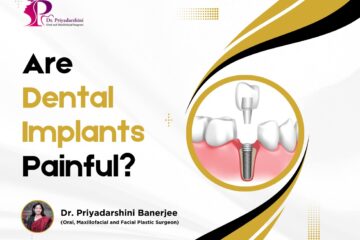If you are thinking about getting dental implants, it’s important to understand the different types available. One of the most common questions patients ask is: What’s the difference between endosteal and subperiosteal implants? In this blog, we will break down the two main types of dental implants in a clear, easy-to-understand way, and help you decide which one might be the right choice for your smile.

What Are Dental Implants?
Dental implants are artificial tooth roots made of titanium or other biocompatible materials. They are placed in your jawbone or above it to support crowns, bridges, or dentures. Implants help restore missing teeth in a permanent, natural-looking way.
But not all implants are the same — especially when it comes to how and where they’re placed. That’s where the terms Endosteal and Subperiosteal come in.
1. Endosteal Implants: The Most Common Type
What are they?
Endosteal implants are the most commonly used type of dental implant. They are placed directly into the jawbone.
How do they work?
Once inserted into the jawbone, the implant acts as an artificial root. After healing (a process called osseointegration), a crown or denture is attached on top.
Shapes:
- Screw-type (most common)
- Cylinder-type
- Blade-type
Ideal for:
✅ Patients with healthy jawbone density
✅ Those looking for a long-term, sturdy solution
✅ People missing one or more teeth
Advantages:
- Strong and stable
- Long-lasting
- Mimics natural teeth feel
- Suitable for most implant cases
Considerations:
- Requires sufficient bone
- Involves minor surgery
Healing takes a few months
2. Subperiosteal Implants: A Solution for Bone Loss
What are they?
Subperiosteal implants rest on top of the jawbone but underneath the gum tissue. They do not go deep into the bone.
How do they work?
A metal frame is custom-made to fit the jawbone shape. It sits on top of the bone, and posts protrude through the gums. The artificial teeth are then attached to these posts.
Ideal for:
✅ Patients with shallow jawbone
✅ Those who cannot undergo bone grafting
✅ Elderly patients or people with bone loss
Advantages:
- Doesn’t require bone graft
- Less invasive for patients with weak bone structure
- Can be placed in one surgery
Considerations:
- Not as secure as endosteal implants
- May have a higher risk of infection or shifting
- Less commonly used today due to advancements in bone grafting
Endosteal vs. Subperiosteal: Key Differences
Feature | Endosteal Implants | Subperiosteal Implants |
Placement | Inside the jawbone | On top of the jawbone |
Stability | Very stable | Less stable |
Surgery | Requires bone drilling | Sits above bone |
Bone Requirement | Needs healthy bone | Ideal for bone loss |
Popularity | Most common | Rarely used now |
Which Type of Implant Is Right for You?
The best type of implant depends on:
- The condition of your jawbone
- Your overall health
- Your dental goals
- Recommendations from your implant dentist
Your dentist may also recommend bone grafting if you want endosteal implants but have insufficient bone.
Let’s Make It Simple: A Quick Analogy
Think of your jawbone like soil and the implant like a tree.
- Endosteal Implant: You plant the tree in the soil (jawbone). It grows roots and becomes strong.
- Subperiosteal Implant: You place a pot on the soil with the tree in it. It stands, but it’s not rooted deeply.
Final Thoughts
Understanding the types of dental implants helps you make a confident, informed decision. Endosteal implants are strong, long-lasting, and suitable for most patients. Subperiosteal implants are a great alternative for those with bone loss or other limitations.
Before deciding, it’s essential to have a consultation with a qualified implantologist or dental surgeon who will evaluate your oral health, bone structure, and guide you through the best options.
Need expert advice in Pune?
Dr. Priyadarshini Banerjee is a highly experienced implantologist who can assess your smile and guide you on the best implant type. Visit drpriyadarshinibanerjee.com to book your consultation today.



